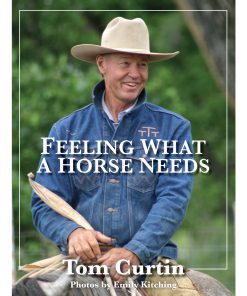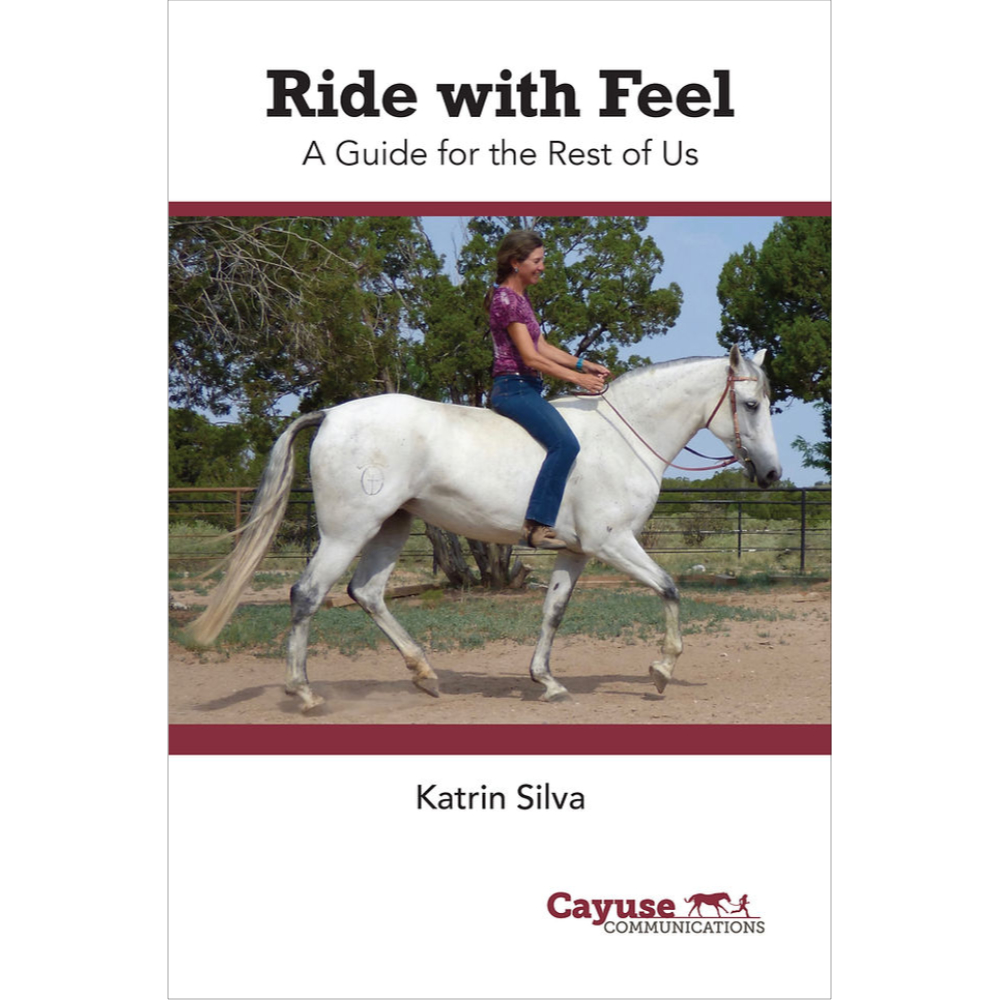Ride with Feel: A Guide for the Rest of Us by Katrin Silva
$19.00
Out of stock
Product Description
The concept of feel can sound like a mystery-filled holy grail to many riders. I’ve heard a couple of clinicians say, or imply, that their students will never have feel, that they can’t hope to ever reach this level of horse-human connection. I’ve also heard these students agree with the assessment that feel is reserved for those select few with natural talent for working with horses. Feel then becomes something elusive that those who lack it will never grasp. Many of us believe that we just have to accept our place in the horse universe as riders with limited potential.
This is a story told so many times by so many people that it sounds true. But it isn’t. I certainly was not born with feel, or with any natural talent for connecting with horses. But over time, and through the right kind of experience, I learned how to feel. You can, too. Feel is something anyone can develop, with enough practice, on the right kind of horse, in the right kind of setting, with the right kind of guidance from the right kind of teacher. So, don’t believe the story. Don’t drink that Kool-Aid. You, too, can learn to be a feeling rider. To find out how, and why, check out my book Ride With Feel: A Guide for the Rest of Us.
About the Author:
Riding a horse means communicating with a powerful, inherently sensitive being. It’s a two-way conversation, not just a series of imperatives directed at the horse. We all want a calm, balanced, light, straight, responsive, and happy horse. We need to cultivate these qualities in ourselves before we can expect them from our horses. We need to be calm, centered, patient, kind, and consistent. We need to develop a seat that makes us an easier load to carry. We need to use aids that make sense to the horse. We need to keep our expectations reasonable, our requests polite. We need to reward often, and sooner than we think we can.
Riding a horse is a privilege. Any horse we climb on could get rid of our presence on his back anytime he chooses. Yet, most of the time, horses tolerate us. More than that, they allow us to engage with them, to direct them, to guide them. The least we can do in return is to make being ridden as pleasant as we can, physically and mentally. We have an obligation to develop the horse’s body in a way that makes carrying us less of a chore, and to develop his confidence and focus in a way that makes him happy to be with us. This is the definition of dressage.
You may also like…
-

Bringing It Together Book and DVD
5.00 out of 5$65.00Brands:Ellen EcksteinAdd to cart -

Dressage for All of Us: How to Help any Horse Become a Happier, More Responsive Riding Partner by Katrin Silva
0 out of 5$19.00Brands:Katrin SilvaRead more -

Raising the Base of the Neck with Deb Bennett, Ph.D. – Archive
5.00 out of 5$25.00 Premium content
Related products
-


Dogmanship, A Horseman’s Ponderings by Tom Moates
0 out of 5$19.95Brands:Tom MoatesAdd to cart -

Total Horsemanship by Jean Claude Racinet
4.00 out of 5$32.95Brands:Jean Claude RacinetAdd to cart -

Reinsman of the West: Bridles and Bits by Ed Connell
5.00 out of 5$19.95Brands:Ed ConnellAdd to cart -


Feeling What A Horse Needs By Tom Curtin
0 out of 5$60.00Brands:Tom CurtinAdd to cart -

Gymnastic Exercises for Horses:II by Eleanor Russel Xenophon Ed.
5.00 out of 5$49.95 Add to cart


